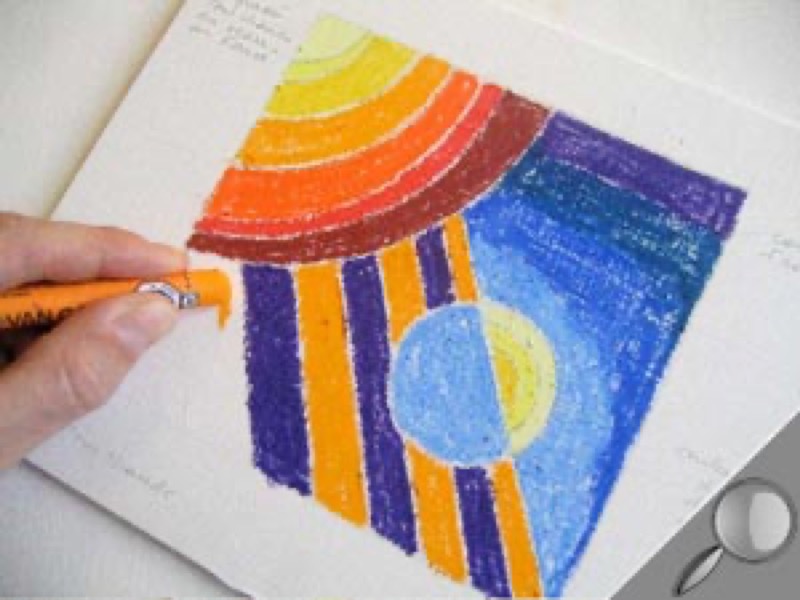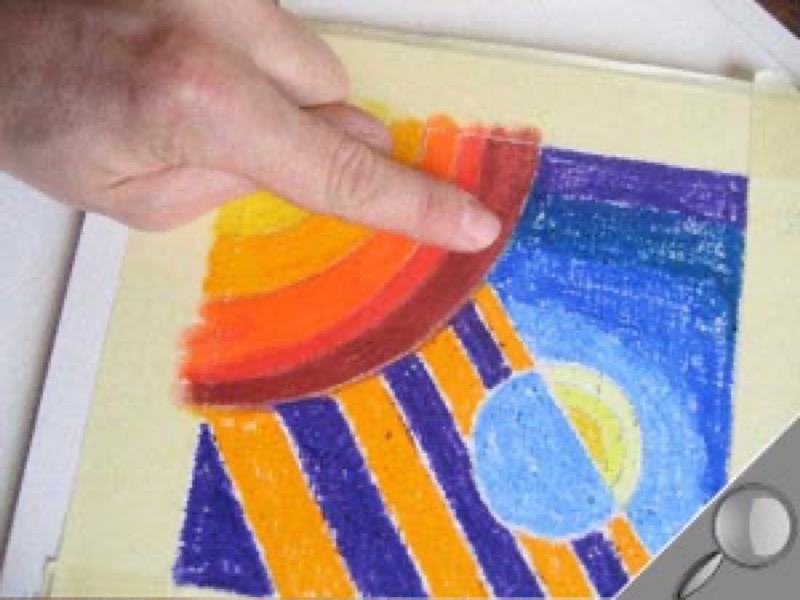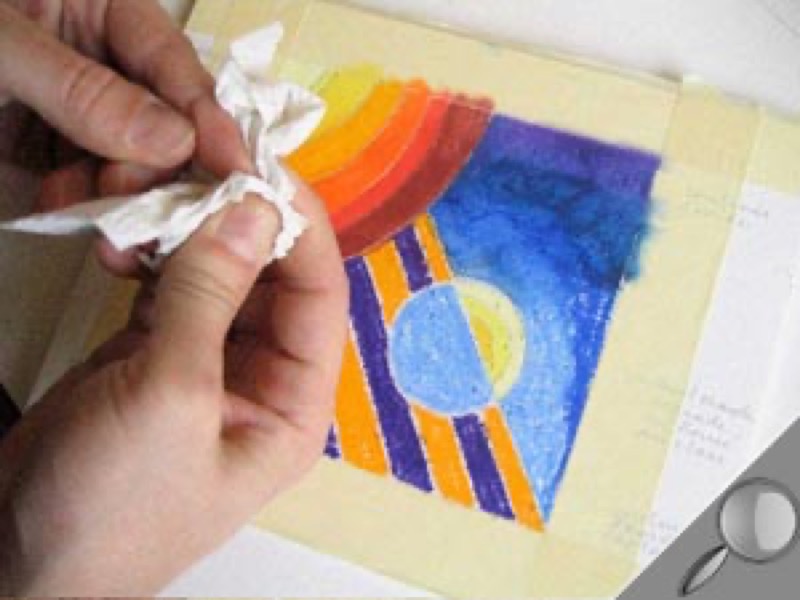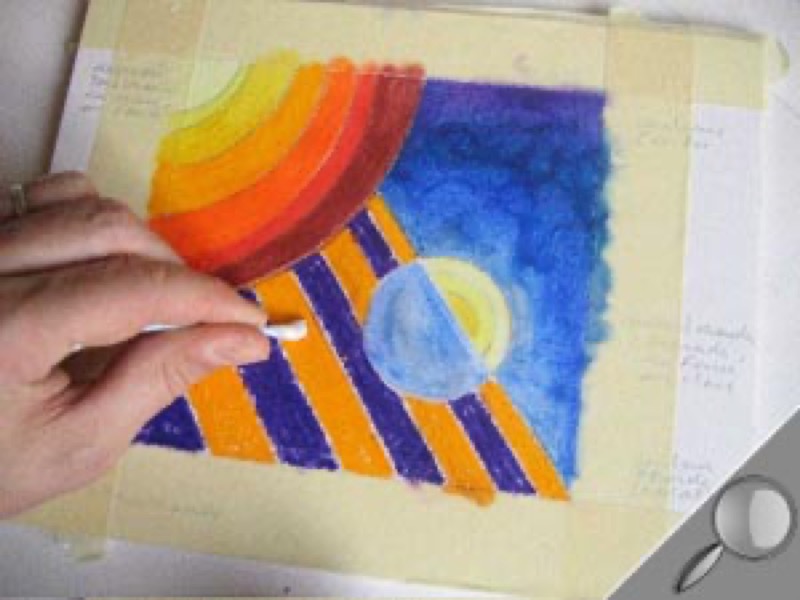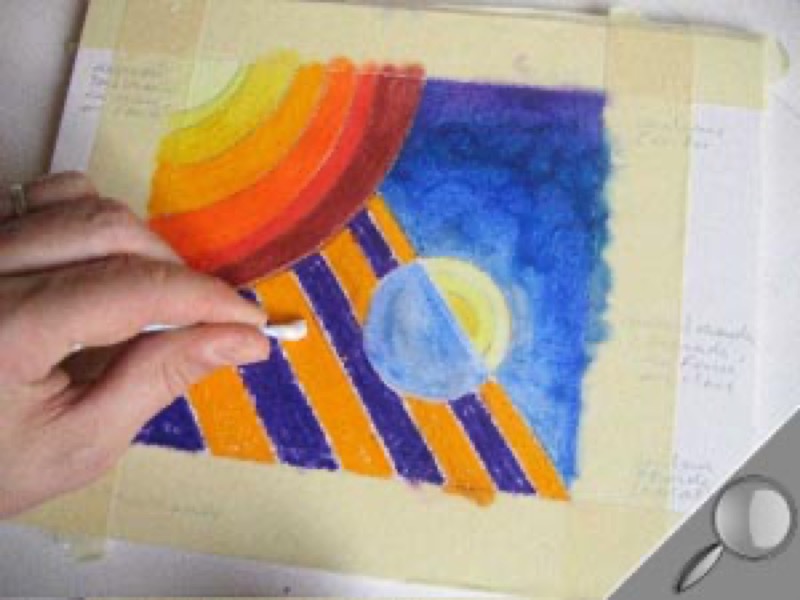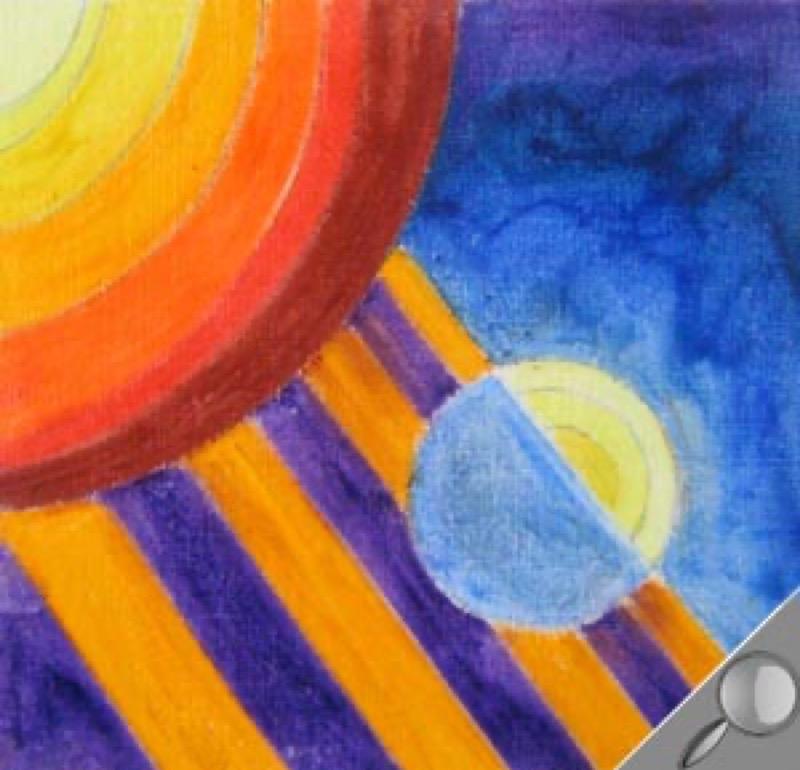
Level of difficulty: novice Estimated time: 1:30 hours
Artist : Frédéric Jalleau
This simple geometric composition will allow you to learn about colors and how the interact, the basic principle of pastels! Your goal: sharpening your eye for contrast and the effect of colors in space. While waiting to move on to more ambitious creations…
Paper: Canson Figueras linen canvas textured oil painting paper 290g/m2
Colors: 11 oil pastels
- yellow pale, light yellow, lemon yellow, and dark yellow
- orange
- vermillion, Indian red
- bluish violet, Prussian blue, dark ultramarine, light ultramarine.
Pencil: 1 Criterium mechanical pencil
Accessories: cotton swabs, 1 roll of paper towels, 1 roll of masking tape, 1 spray can of matte fixative.






